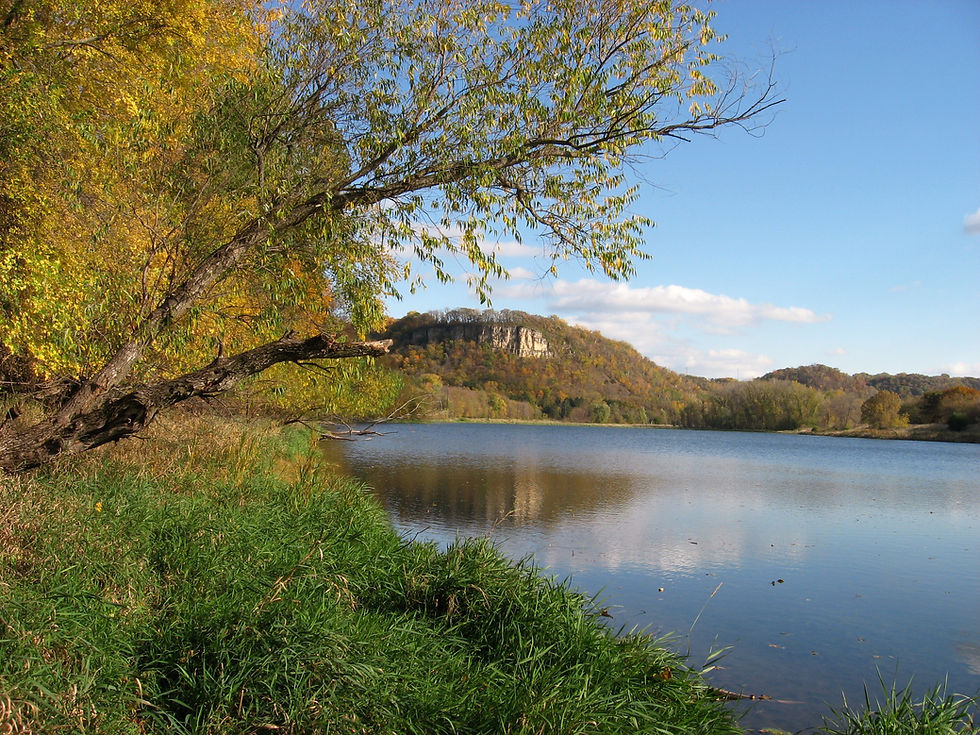Winter Transitions into Spring
- Bruce Ause
- Mar 14, 2018
- 3 min read

Three Among Many
In my previous post, I mentioned that deer tend to yard up in sizable groups near a reliable source of food in the winter. While I was out skiing on the morning of February 24th, I happened upon a group 12 deer feeding on a south-facing slope. The previous day, temperatures rose up to 40 degrees and considerable melting had taken place. As night progressed, temperatures plummeted causing the moisture laden air to condense on cold vegetation creating a magical landscape of hoar frost the next morning.

Barred Owl
While driving to Red Wing on the morning of February 25th, we noticed a dead barred owl in the snow next to highway 61 an apparent casualty of a collision with a vehicle. Unfortunately roadside ditches in the winter create a dangerous situation for owls at night as they hunt for a meal of rodents. Given the fact barred owls start nesting at the end of February and only the female incubates the eggs, one wonders if this owl was a male on a quest to bring food back to it's mate?

Owl Feet
As you can see from this photo, barred owls have feathered feet to protect them from the cold. These feathers also help the owl sense contact with their prey and protect against prey that might bite when captured. Another interesting characteristic of an owl's foot is that when in flight and perching three toes face forward and one backward. When clutching their prey, the outer front toe on each foot swivels to the rear assisting them in hold their quarry.

Fresh Beaver Cuttings
As I was cross country skiing on the morning of February 27th, I came across something very unexpected- fresh beaver cuttings. As I have mentioned in earlier posts, beaver lay up a winter supply of food by establishing a feed pile near their lodge. This should give them access under the ice to their food until spring break-up. The trails or slides in this photo are much larger than what would be created by otter and are evidence of the beaver dragging branches back to nearby open water on the river.

Emergency Entrance
Evidently because of low water levels this winter, the ice near the lodge froze to the bottom depriving the beaver access to their stash of nourishment. Hence to survive, this family of beaver was forced to chew their way through the ice and travel overland in search of food. Given the fact beaver are very clumsy on land and have very poor eyesight, they now become easy prey for a predator like a coyote.

Northern Cardinal
Despite the fact cardinals are permanent residents of southern Minnesota, they remain surprisingly silent during most of the winter. For winter weary Minnesotans, an optimistic early sign of spring is to hear the call of the cardinal around the beginning of March. On March 1st our neighborhood came to life with the whistling call "what-cheer, cheer, cheer."

Male Bluebird
For many migrating bird species like the robin and red wing blackbird, the male bluebird arrives first in the spring and established it's territory. On March 3rd, we observed our first male bluebird. The females won't be far behind. Now is the time to get your bluebird nesting boxes ready for occupancy.

Sapsicle
Because of a more normal "Minnesota" winter with snowfall and cold temperatures, the flow of maple sap is just starting. Last winter (2016-17) with less snow and warmer temperatures, I tapped my maple trees on February 8th. This year I noticed this maple sapsicle formed on a maple twig on March 6th. If you discover one of these in your yard or on a hike in the woods, break it off an taste it. They are just as tasty as a store purchased popsicle.

American Robin
Another exciting sign of spring is hearing and observing male robins in our neighborhood. On March 8th, we observed a flock of robins feasting on local sumac berries.




Comments